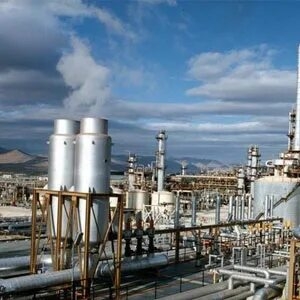GCC Industrial Gases Market: Geographical Scope, Growth Tactics, and Forecast 2030Posted by Pearl Smith on February 28th, 2023  Industrial gases refer to the gases that are produced, stored, and utilized in various industrial applications. These gases can be categorized into two types: atmospheric gases and process gases. Atmospheric gases are those gases that are obtained from the earth's atmosphere, such as oxygen, nitrogen, and argon. These gases are separated from air using a process called air separation. Process gases are those gases that are produced through chemical reactions or other industrial processes, such as hydrogen, carbon dioxide, and helium. These gases are used for various industrial applications, including welding, cutting, heating, cooling, and as raw materials for chemical production. Some of the most common industrial gases and their uses include: Oxygen - used for welding, cutting, and medical purposes. The GCC (Gulf Cooperation Council) industrial gases market refers to the production, distribution, and consumption of industrial gases in the countries that comprise the GCC. The GCC consists of six member countries, including Bahrain, Kuwait, Oman, Qatar, Saudi Arabia, and the United Arab Emirates. The industrial gases market in the GCC is expected to grow in the coming years, driven by factors such as increased investments in infrastructure, growing demand for industrial gases in various end-use industries, and rising population and urbanization in the region. The market is also likely to benefit from the region's strategic location and its growing importance as a hub for international trade. Key companies covered as a part of this study include Air Liquide, Air Products and Chemicals Inc., The Linde Group, Praxair Inc., Abdullah Hashim Industrial & Equipment Co. Ltd, Bristol Gases, Buzwair Industrial Gases factory, Dubai Industrial Gases, Gulf Cryo, Mohsin Haider Darwish LLC, National Industrial Gas Plants, and Yateem Oxygen The industrial gases market demand is driven by a variety of factors including economic growth, industrialization, and technological advancements. Industrial gases such as oxygen, nitrogen, hydrogen, and carbon dioxide are used in a wide range of industries such as oil and gas, healthcare, food and beverage, chemicals, electronics, and metal fabrication, among others. One of the main factors driving the demand for industrial gases is economic growth. As economies grow, there is increased demand for products and services, which in turn drives demand for industrial gases. For example, in the construction industry, the demand for industrial gases such as oxygen and acetylene for welding and cutting is directly related to the growth in construction activity. Another factor driving demand for industrial gases is industrialization. As industries expand and become more complex, there is increased demand for gases such as nitrogen and hydrogen for use in the production process. For example, in the chemicals industry, nitrogen is used as a blanketing gas to prevent explosions and to create an inert atmosphere in the production process. Technological advancements are also driving demand for industrial gases. New technologies such as fuel cells, which use hydrogen as a fuel source, are becoming more widespread, leading to increased demand for hydrogen. In addition, the use of industrial gases in the healthcare industry is also increasing due to technological advancements in medical devices and procedures. The industrial gases market is expected to continue its growth trajectory in the coming years, driven by a range of factors including increasing demand from various industries, technological advancements, and the growing need for environmental sustainability. One of the key drivers of growth in the industrial gases market is the increasing demand from industries such as oil and gas, chemicals, and electronics. These industries require large quantities of industrial gases such as oxygen, nitrogen, and hydrogen for a variety of applications including refining, processing, and manufacturing. As these industries continue to expand and demand for their products increases, the demand for industrial gases is also expected to grow. Another factor driving growth in the industrial gases market is the increasing use of gases in new and emerging applications such as fuel cells, carbon capture and storage, and biogas production. Technological advancements in these areas are expected to lead to increased demand for industrial gases such as hydrogen, carbon dioxide, and nitrogen. The growing need for environmental sustainability is also driving growth in the industrial gases market. The use of industrial gases in applications such as carbon capture and storage is expected to help reduce greenhouse gas emissions and mitigate climate change. In addition, the use of industrial gases in fuel cells is expected to contribute to the transition towards clean energy sources. Like it? Share it!More by this author
|


